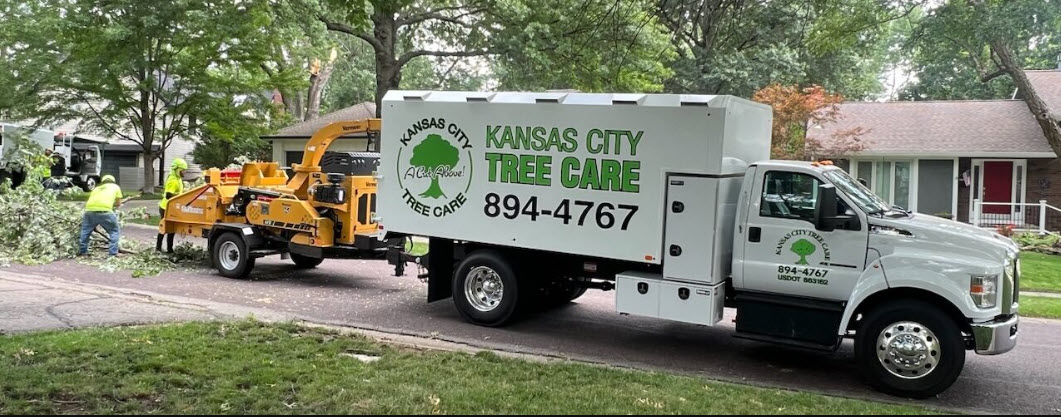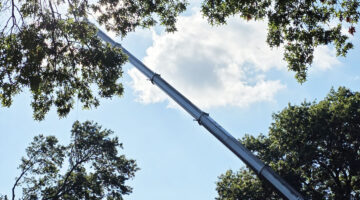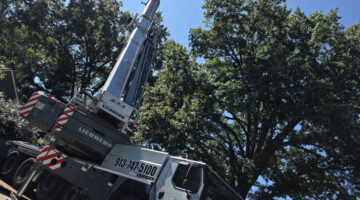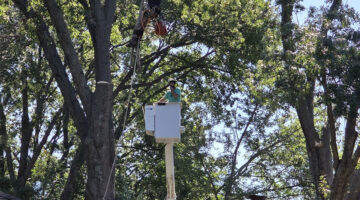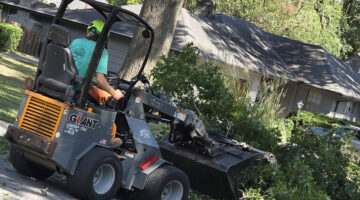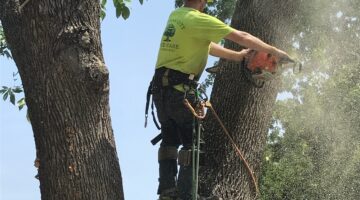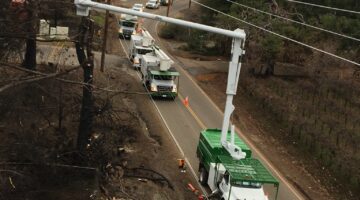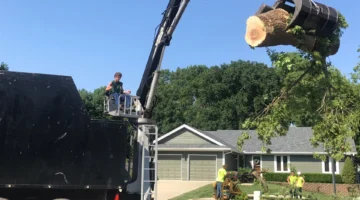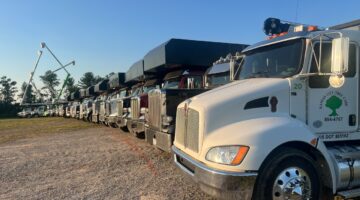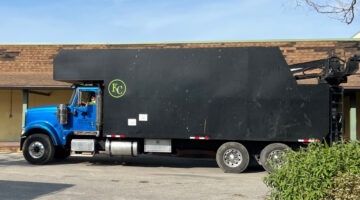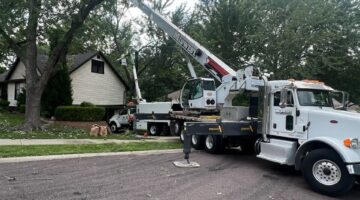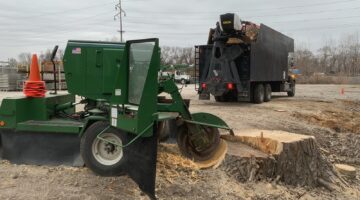Did you know nearly 100 deaths—and thousands of serious injuries—occur each year during DIY tree removal projects? Most of these accidents are entirely preventable with the right safe tree removal techniques . If you’re thinking about tackling a tree removal , knowing the best practices can protect your home, your safety, and your neighborhood. Read on to learn proven tactics and become empowered to handle or hire for tree felling , tree cutting , and tree trimming the right way.
- Why safe tree removal techniques matter for homeowners
- Step-by-step processes and preparation tips
- The difference between removing a small tree and a large tree
- Tools, safety gear, and when to hire a professional tree removal service
- Frequently asked questions about regulations, cost, and aftercare
Revealing Statistics: Why Safe Tree Removal Techniques Are Essential
Tree removal isn’t just about grabbing a couple chainsaws with a pickup and just starting to cut; every year, more than 100 people lose their lives due to unsafe tree removal methods, while thousands more suffer from preventable injuries. These sobering statistics underscore how important it is to use safe tree removal techniques —especially when trees are close to power lines, structures, or pedestrian areas. In urban and suburban environments, falling branches and unexpected tree fall are among the top causes of property damage and personal injury.
Expert arborists warn that the difference between a controlled tree felling and a disaster often comes down to careful planning and knowledge of proper tree cutting methods. Many homeowners underestimate the potential risks, assuming smaller trees or simple removals present little danger. In reality, both small and large trees can pose significant hazards if not handled with strong safety precautions.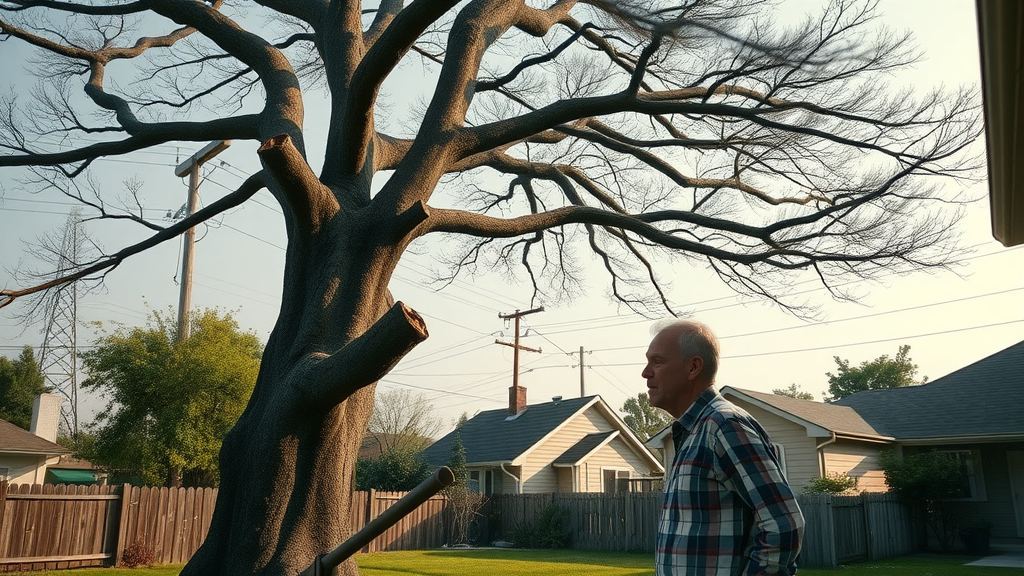
"Nearly 100 deaths and thousands of injuries occur each year during DIY tree removal projects – most are preventable with proper safe tree removal techniques."
Understanding Safe Tree Removal Techniques: Key Principles for Homeowners
To safeguard your property and personal safety, it’s essential to understand the basic principles behind safe tree removal techniques . These key guidelines are not just about efficiency—they have a direct impact on your home’s safety and long-term value. Start with a thorough risk assessment to identify nearby hazards such as power lines , utility poles, or neighboring buildings. Legal and local safety requirements should always be checked in advance, as cutting down a tree without the proper permits can lead to hefty fines or liability concerns.
- Risk assessment fundamentals: Before you remove a tree , examine its position, lean, branch stability, and proximity to hazards.
- Legal and safety requirements: City and municipal governments often require a permit for tree felling; always verify prior to starting the tree removal process .
- Property value and safety: Using proper safe tree removal techniques preserves landscaping aesthetics and limits the chances of accidental damage or injury.
By setting a solid foundation in these principles, you reduce the potential risks and keep your property’s safety and health as your top priority.
Preparation and Assessment: The First Steps in Safe Tree Removal Techniques
Every successful tree removal begins with detailed preparation and assessment. Homeowners and professionals alike must consider multiple factors—from physical hazards to legal permissions—before picking up a saw or axe. Assessing your yard, identifying utility lines, and determining the tree’s size are essential for devising a safe removal plan. Hazards such as underground roots, nearby fences, and unpredictable weather can all affect the outcome, so never rush this step.
Consulting with a professional tree removal service , or at minimum referencing local guidelines, helps ensure nothing is overlooked. The removal process will differ dramatically between a dead tree, a small tree just beginning to overgrow, and a large, mature tree sitting close to obstacles. By taking time to properly prepare, you maximize your chances of a smooth, safe, and damage-free tree felling operation.
Evaluating the Site: Proximity to Power Lines and Structures
Evaluating for power lines and nearby structures is the first and perhaps most critical aspect of safe tree removal techniques. Trees growing beneath or near overhead wires can turn a simple removal process into a major hazard, risking electrical outages, fires, or injury if branches or the trunk fall onto a power line. Before making any cuts, use a measuring tape to determine the distance from the side of the tree to the closest wire or building—most experts recommend a minimum 10-foot clearance when possible.
If a falling tree has the potential to strike a structure or utility line, contact local authorities or a certified arborist for assistance. Felling a tree toward the wrong direction due to wind or chain brake failure can cause thousands in property damage. Do not attempt to remove a tree whose branches reach into or above active power lines—this is a job only for highly trained removal services or utilities.
Identifying Tree Size: Approaching Large Trees Versus Small Trees
The techniques to cut down a tree vary widely based on the size of the tree. While smaller trees (typically under 20 feet) can sometimes be managed safely by homeowners with the right precautions, a large tree presents exponentially greater risks. Large trees have deeper root systems, greater weight, and longer branches—when a tree falls, the impact can be catastrophic if not properly controlled. In most scenarios, it’s wise to call a professional tree removal service for trees larger than 20 feet or standing within 15 feet of a structure or utility line.
Small trees, while easier to handle, still require pre-cut inspection, safe working conditions, and use of proper tools and personal protective equipment. Always plan out your escape route for both large tree and small tree scenarios—the best place to stand is usually at a 45-degree angle from the opposite side of the intended fall direction. Even an improperly cut small tree can bounce, roll, or fall unexpectedly, so don’t allow size to dictate your caution.
Legal Requirements: Permission to Cut Down a Tree in Your Backyard
Before you proceed to remove a tree from your property, familiarize yourself with local regulations. Many cities and municipalities require homeowners to obtain a permit for tree removal, especially if the tree is mature, located within historic districts, or provides environmental benefits. Failure to secure permission can lead to fines or the expense of replanting. Always contact your city’s planning or forestry department to determine if any legal steps apply to your situation—in some areas, you may need to replace the tree or pay compensatory fees after removal.
Remember, legal requirements aren’t just bureaucratic—they exist so trees that support property values, community shading, and ecological balance aren’t lost unnecessarily. Even with private land, when tree removal affects neighboring properties or power lines , professional consultation and legal compliance should be the top priority.
Tools and Equipment for Safe Tree Removal Techniques
Proper tools and equipment can make all the difference when performing safe tree removal techniques. Using the right gear doesn't just make the removal process more effective—it can protect you from severe injury. The fundamental equipment ranges from heavy-duty chainsaws with enhanced safety features to work gloves and ropes for controlled felling and safe maneuvering around the work zone. Every chainsaw operator should understand the chain brake system, ensuring it engages instantly if kickback occurs. Use of a helmet and visor protects against flying debris, while ropes and harnesses are crucial for higher branches or when using advanced tree felling approaches with larger trees.
Before starting the tree removal process, perform a visual inspection of all tools and test their safety features—working without reliable gear increases your risk dramatically. Keep emergency contacts on hand in case an accident occurs, and make sure all bystanders remain safely away from the tree fall zone. Here is a comprehensive checklist for safe tree removal equipment:
| Tool/Equipment | Purpose | Safety Feature |
|---|---|---|
| Chainsaw | Cutting through trunk and branches | Chain brake, anti-vibe |
| Pole saw | Reaching high branches | Insulated pole |
| Helmet & Visor | Personal protection | Integrated ear/eye guard |
| Ropes & Harnesses | Controlled tree felling and safety | Break strengths rated |
| Wedges | Directional control of tree felling | Impact-resistant material |
| Work gloves | Hand protection | Reinforced grip |
Best Safe Tree Removal Techniques: Step-by-Step Guide
Successful tree felling demands a disciplined approach and exact process. By following a logical, step-by-step series of actions, the risk of accident or damage is minimized, even in more complex scenarios. Planning, marking, and executing your cuts—using the right chain brake technique and remaining mindful of escape routes—are vital, especially when felling a tree in close quarters with buildings, power lines, or other obstacles.
Begin every tree cutting operation by observing the direction the tree "wants" to fall (based on trunk lean, canopy weight, and wind conditions). Prepare your site by removing tripping hazards and positioning ground observers or spotters as needed. Always pause to double-check notch placement and make sure you have clear visibility and enough retreat space before activating your chainsaw or starting the removal process.
Planning Your Cut: The Science of Felling a Tree
The planning stage in felling a tree involves evaluating not only the direction of fall but also ensuring all escape routes are free from obstacles and easily accessible. Professionals recommend assessing the tree's center of mass and calculating escape angles—ideally at a 45-degree angle behind and away from the expected path of the falling tree. Next, you’ll need to mark out your felling notch and back cut positions. The felling notch, typically made on the side of the tree facing the intended fall zone, guides the direction of the fall, while the back cut (placed slightly above and on the opposite side) releases the tension and allows the tree to begin falling safely.
- Identify falling direction
- Clear escape routes
- Mark your notch and back cut positions
This systematic approach will help prevent uncontrolled tree fall, especially if unexpected grain, rot, or wind gusts arise as you cut down a tree. When in doubt, always consult with experienced professional tree removal teams.
Executing the Cut Down: Proper Chainsaw Use and the Chain Brake
When it’s time for cutting the tree, the right use of a chainsaw—combined with safety features like the chain brake —is critical. Always engage the chain brake before starting the chainsaw, and hold the saw firmly with both hands while positioning it above the first notch mark. Make the front, angled cut first, then the flat bottom cut to finish your notch. Move to the back cut, remaining alert as you approach the hinge wood (the uncut section that helps control the tree fall).
If kickback is encountered or the saw stalls, the chain brake will stop the chain instantly, protecting your hands and reducing the risk of a severe accident. Step away along your predetermined escape route as soon as you see the tree begins to fall. Never linger behind or directly in the path of the falling tree —unexpected movement or rolling is always a risk with both large tree and small tree scenarios.
Felling Trees Near Power Lines – Precautions and Risks
Cutting trees near power lines isn’t a task to take lightly. Even a single errant branch can cause a short circuit, disrupt local electricity, or trigger dangerous fires. For this reason, many regions make it illegal for unlicensed individuals to remove a tree in the direct vicinity of utility lines. The safest course of action is to enlist a professional tree removal service experienced in high-risk removals; these teams use insulated tools, safety harnesses, and lookout personnel for a controlled, phased removal technique.
Never attempt to clear branches or cut down a tree that’s touching or tangled with power lines by yourself. Always notify your local utility provider for assistance—they can temporarily disconnect or de-energize lines if needed. Remember, demonstration of safe tree removal techniques is crucial to everyone’s safety, especially in crowded suburban and urban settings.
Safe Tree Removal Techniques for Large Tree Challenges
Large trees add value and shade but also introduce complexity to the tree removal process. Physically bigger trees require precision, advanced rigging, and sometimes specialized machinery. Whether your concern is an oversized oak leaning close to your house or an aged pine with multiple dead limbs, the methods and safety gear used must be top-notch. Professionals often segment large tree removal into manageable sections, lowering branches and trunk pieces with ropes and harnesses to avoid uncontrolled falls.
Attempting to cut down a large tree without sufficient training, resources, or an understanding of chain brake and advanced cutting techniques can result in structural damage, serious injury, or even fatality. For any large tree situated near valuable property, side of the tree obstacles, or power lines, professional tree removal services should always be consulted.
Advanced Techniques for Safely Removing Large Trees
Advanced techniques for large tree felling include sectional dismantling (cutting branches or trunk segments from top to bottom) and the use of lowering ropes with friction brakes for precise control. Certified arborists use cranes, block and tackle systems, and climbing harnesses to remove upper limbs first, then incrementally reduce the remainder of the tree.
These procedures permit the removal of trees in tightly confined spaces and reduce the risk of the entire tree—or major branches—falling where not intended. Rigging devices and communication between crew members are paramount; one misstep with a chain brake or failure to coordinate can result in unpredictable tree fall. Never underestimate the challenge posed by a large tree, especially if rot, insects, or abnormal growth patterns are present.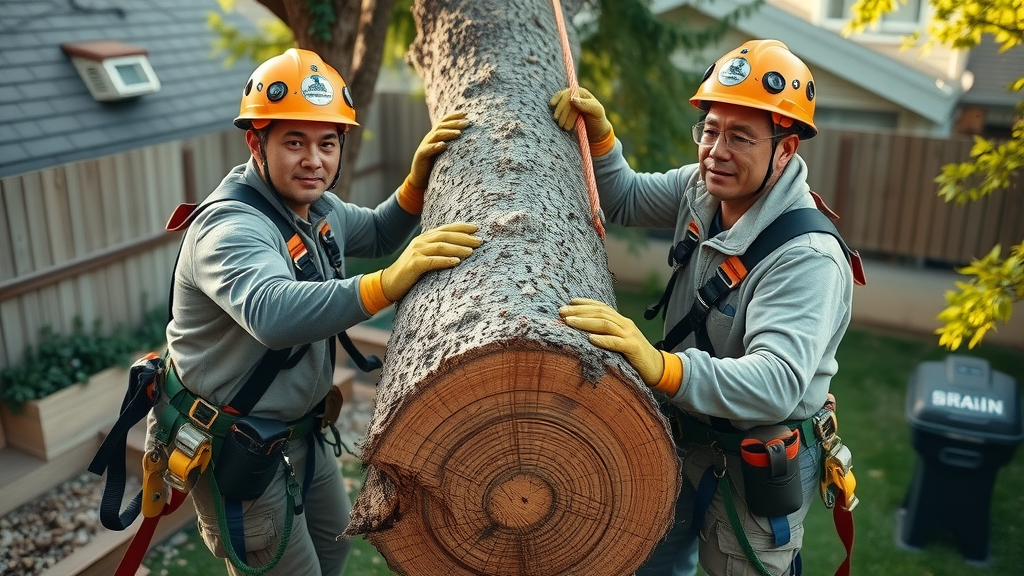
Why Professional Tree Removal Is Crucial for Hazardous or Large Trees
Hiring a professional tree removal service is invaluable for hazardous or large trees. Not only do professionals have insurance to cover unforeseen damage or injury, but their experience minimizes risk and ensures compliance with local codes. Specialized equipment—like insulated pole saws, ropes and harnesses, or advanced chain brake-enabled saws—enables the safe removal of even the most challenging trees.
Most homeowners simply do not possess the combination of tools, expertise, and physical stamina needed for large-scale tree felling. The potential for a costly or even tragic accident is high, particularly if the tree is structurally compromised or entangled in other vegetation or structures. It’s always better to be safe rather than sorry—bring in the experts for peace of mind and lasting property safety.
Tree Trimming Methods: Maintaining Safety and Tree Health
Tree trimming is essential not just for curb appeal but for the long-term safety and health of your property. Regular tree trimming can prevent dangerous dead tree limbs from falling on structures or in high winds, reduce the spread of disease, and promote healthier, longer-living trees. When done correctly, trimming also reduces the need to remove a tree entirely—allowing you to shape the canopy and eliminate hazardous, overhanging branches.
- Pruning for longevity: Remove dead wood and crossing branches to give your tree the best chance for vigorous regrowth.
- Preventing property damage: Trimming keeps branches clear of rooftops, gutters, and power lines.
- Tree trimming aftercare tips: Use proper sealants on large cuts and water thoroughly after major trimming sessions to limit shock and foster recovery.
Both DIYers and professionals should use sanitized, sharp equipment and perform regular inspections after storms or high winds to ensure quick response to new hazards.
Hiring a Professional Tree Removal Service: What to Look For
Not all tree removal services are created equal. When looking for a reliable team, prioritize those with up-to-date credentials, comprehensive insurance policies, and documented safety procedures. Make sure any professional tree removal company you consider adheres to local and national standards for arboriculture work—they’ll often display certifications from organizations like the International Society of Arboriculture (ISA) or possess state-specific licenses for tree felling and large tree work.
Credentials, Insurance, and Safety Standards for Tree Felling
Verify the credentials of your chosen removal service: Are they insured for property damage and worker’s compensation? Do they use documented safety practices, such as chain brake-equipped saws and full-body harnesses for arborists? Professional companies should always provide proof of insurance and relevant certifications unprompted. This protects you from liability if an accident occurs during the tree removal process.
Look for removal services whose teams regularly attend safety workshops and are familiar with new tools and equipment. A reputable provider will readily discuss their safety records, equipment checks, and processes for emergency tree removal after storms or unexpected tree falls.
When to Choose a Removal Service Over DIY Safe Tree Removal Techniques
There are clear signs when calling a professional tree removal service is a must. If the tree in question is large, close to power lines, or shows evidence of disease that could cause unpredictable breaks, don’t attempt DIY removal. The risks significantly outweigh the possible cost savings. Likewise, if you lack access to advanced tools, have doubts about the best escape route, or encounter legal restrictions, leave the work to seasoned experts. Professional removal services offer peace of mind, speed, and coverage in the event something goes wrong.
"A professional tree removal service brings experience, efficiency, and insurance protection most homeowners can’t match."
Costs Involved in Tree Removal: Understanding the Investment
The price to cut down a tree varies widely based on tree size, location, health, accessibility, and whether the project includes stump grinding or debris removal. Small trees can often be removed for a few hundred dollars, while the cost to remove a large tree—especially one adjacent to a house or power line—can exceed several thousand. This investment reflects both the specialist skills required and the high risk involved in complex removals.
| Tree Size | Estimated Cost (USD) |
|---|---|
| Small Tree | $150 – $500 |
| Medium Tree | $500 – $1,000 |
| Large Tree | $1,000 – $3,000+ |
Always seek a written quote beforehand, and prioritize removal services with strong reviews, recent references, and a demonstrated history of safe tree felling practices.
People Also Ask: Safe Tree Removal Techniques Explained
What's the safest way to cut down a tree?
- Plan your cuts and escape routes carefully before you begin any tree cutting process.
- Always use personal protective equipment such as a helmet, gloves, and chainsaw chaps.
- Employ both proper notch and back cut methods to control the direction of the tree fall.
- Ensure your footing is stable and check your tools—especially the chain brake—are in top condition.
What is the 90 15 5 rule?
- Create a 90-degree notch opening on the side of the tree facing the intended fall, which optimizes control and direction during tree felling.
- Leave a hinge that is approximately 15% of the tree’s diameter to act as a pivot and absorb energy as the tree falls.
- Retain 5% of the tree’s diameter as holding wood for extra safety and structural stability during the cut down process.
How much does it cost to cut down a 20 ft tree?
- Removing a 20-foot small tree typically costs between $200 and $700, depending on site access, health, and surrounding hazards.
Do I need permission to cut down a tree in my backyard?
- Many local councils and municipalities require a permit for tree removal, even on private property. Check your city’s regulations and get permission before starting the tree cut.
Frequently Asked Questions: Safe Tree Removal Techniques
- Can I use safe tree removal techniques on diseased trees? Yes, but additional caution is required as diseased or dead trees may be structurally unsound. Always consult with a professional tree removal service for hazardous cases.
- What time of year is best for tree felling? Late fall or winter, when trees are dormant and leaves aren’t present, is generally safest for tree felling and tree removal.
- How do I dispose of the wood from tree removal? Many removal services offer haul-away or chipping as part of their package. Alternatively, you may recycle or use cut wood for firewood, mulch, or compost after ensuring it’s disease-free.
Key Points for Executing Safe Tree Removal Techniques
- Always perform site assessments
- Use properly maintained tools (ensure chain brake works)
- Consider professional help for large tree scenarios
- Keep a safe distance from power lines at all times
Protect Your Property: Start Using Safe Tree Removal Techniques Today
"Safety is not expensive – it's priceless. Start with the right technique today to protect your property for years to come."
Begin by planning your next tree removal with safety as your top priority . Whether you’re removing a hazardous dead tree or undertaking preventative tree trimming, the investment in proper methods repays itself many times over. If the job looks complex—or if your confidence wavers—call in the experts!
Call Us For Tree Removal 913-894-4767
Don’t risk an accident. Contact our experienced team for safe, efficient, and fully insured tree removal and tree trimming services today!
To enhance your understanding of safe tree removal techniques, consider exploring the following authoritative resources:
- “How to Remove a Tree Safely” : This comprehensive guide from Angi outlines essential steps for DIY tree removal, including assessing the tree’s lean, planning escape routes, and executing proper cuts to ensure safety. ( angi.com )
- “Step-by-Step Safety Guidelines for Removing Large Trees Without Injuries” : Florida Land Clearing provides detailed instructions on evaluating the tree and surroundings, selecting appropriate safety gear, and performing precise cuts to minimize risks during large tree removals. ( floridalandclearing.com )
These resources offer valuable insights and practical advice to help you conduct tree removal safely and effectively.

